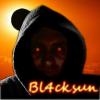
Posted
Seeing the discussion growing around vocal synthesis, I splitted this thread off the Remixes Thread. You find all previous posts below.
Pagination
Mon, 2012-08-27 - 20:10 Permalink
Yes, you can also use http://www.vocaloid.com/en/ the singing synthesis
But perhaps it is more suitable for Japanese people ?..they like it
I thougt there were male singers too..LEON and TONIO
---------------------------------------------------------------------
Vocaloid is a technology for singing voice synthesis developed by Yamaha, and the name of this software application. The software allows users to input melody and lyrics in order to synthesize singing. In other words, with this technology, singing can be produced without a singer.
Singing voice synthesis is produced by using fragments of voices recorded from actual singers, called the Singer Library. By changing this Singer Library, various voices such as Miku Hatsune and Gakupoid are able to be created. There are countless musical pieces that have been uploaded to Nico Video and Youtube that use these products.
Mon, 2012-08-27 - 21:33 Permalink
It looks like the world upside down to use this in SFP, but it depends on the quality of the synthesized vocal.
It is popular in Japan, but i think there are better voices to listen for vocaloids and to use for a arrangement
You can use a vocoder too..it looks similar the synthesized vocals ?
Tue, 2012-08-28 - 08:17 Permalink
Vocaloid unfortunately can not be used in realtime like a VSTi.
Another interesting tool is Pitchmap: www.zynaptiq.com
It can transpose voices and instrument sounds from any audio mix according to MIDI input data in realtime. Even polyphonic. This way the melody and harmony of vocals can be controlled directly by Synfire.
Tue, 2012-08-28 - 14:50 Permalink
It anyone feels like investing in a Vocaloid singer there is a special offer that ends Aug 31. Vocaoid Prima, who sings like a soprano, is $69.99 (£44 approx) plus VAT ("normal" price is $179.99 USD plus VAT). It is Windows only so nothing for us Mac users.
From what I have read on the internet it takes quite a bit of work to get a good result, but it would be nice to have a soprano available and willing to work 24/7 for free :)
Tue, 2012-08-28 - 15:40 Permalink
Windows only? Standalone and offline only? Sounds like a painful procedure. I have no concerns with non-realtime, as long as it integrates with a DAW through VST and AU. Resorting to yet another external piano roll however seems clumsy.
EDIT: Had a look closer. It has VSTi capability, although with limited performance. Lyrics needs to be entered in advance.
Did you know Synfire already supports lyrics ;-)
Tue, 2012-08-28 - 18:35 Permalink
EDIT: Had a look closer. It has VSTi capability, although with limited performance. Lyrics needs to be entered in advance.
As far as I know, not only the lyrics must be entered in advance but also the melody notes, which the Vocaloid voice shall sing must be entered in advance into a piano roll editor at the Vocaloid app. This makes it impossible to control the melody from external MIDI data. Or did this change with the new Vocaloid 3 version? Has anybody experiences with it?
Tue, 2012-08-28 - 22:58 Permalink
The results are getting better each version. It is an amount of work.. I looked at it a year or so back.. Besides have to run a Pc, and then a PC DAW, the amount of work just didnn't seem worth it.. Seems like things are getting more streamlined, and certainly the sounds are better I sure wish Yamaha would consider Mac users.
Wed, 2012-08-29 - 09:05 Permalink
Back in the days when I was doing a lot of songwriting, I used to sing nonsense vocals myself. Writing decent lyrics is a demanding art in it self. It can not be done on the fly. So, if your creative workflow starts with music rather than text, you have little choice other than humming some random stupid stereotype fragments.
Controlling a Vocaloid from Synfire, perhaps using a new parameter, would be fantastic for song prototyping. You compose a melody, another parameter generates (random?) phonetics, then Vocaloid does some preprocessing in background before you can play the song.
:thumbsup:
Wed, 2012-08-29 - 09:40 Permalink
This was an early attempt at using vocoloid prima. I wasn't that impressed, this tune was released under an alternative artist name I used to use. Toontopia was the name of the radio/virtual station I played out over and this track was created in a few hours as a birthday present for the owner. It was started with sf although all the vocoloid stuff was done using their standalone editor. It seemed very hard to create something natural sounding that could be understood. Tbh I've yet to read the manual though!
(https://w.soundcloud.com/player/?url=https%3A//api.soundcloud.com/track…)
Mmmm though she featured a bit more in there than she does. I know mike old field has used vocoloid in some of his work for backing vocals. There are a lot of parameters you can tweak and some decent examples out there. Vocoloid is a 1000x improvement on my voice and a lot cheaper than paying for a session singer, maybe I'll have to boot up the pc and have another play with her (ooh errr missus)
Wed, 2012-08-29 - 11:30 Permalink
If your are strong in the Spanish language ....
Bruno has a powerful, mature and elegant masculine voice that suits a wide range of musical styles.
http://www.youtube.com/watch?feature=player_embedded&v=Sr04KyG5BWE
There is also Clara too!
http://www.youtube.com/watch?feature=player_embedded&v=IUHmvVxN814
info:
Vocaloid 3 launched on October 21, 2011, along with several products in Japanese and a Korean product, the first of its kind. Several studios are providing updates to allow Vocaloid 2 vocal libraries to come over to Vocaloid 3.
It will also include the software "Vocalistener", which adjusts parameters iteratively from a user's singing to create natural synthesized singing. It will support additional languages including Chinese, Korean, and Spanish. It is also able to use plug-ins for the software itself and switch between normal and "classic" mode for less realistic vocal results. Unlike previous versions, the vocal libraries and main editing software are sold as two separate items.
The vocal libraries themselves only contain a "tiny" version of the Vocaloid 3 editing software. Yamaha will also be granting the licensing of plug-ins and use of the Vocal oid software for additional mediums such as video games.
LANGUAGE : ENGLiSH, JAPANESE, KOREAN
Wed, 2012-08-29 - 11:55 Permalink
And here is Oliver, a new voice for Vocaloid3:
http://powerfx.com/products/oliver
At the bottom of the page you can listen to an example.
Please note that this library ships with the limited version of Vocaloid Editor.
Wed, 2012-08-29 - 12:13 Permalink
Oliver is an English Vocaloid developed by PowerFX and new VOCALOID company, VocaTone.[2] Oliver's voice provider was a 13 year old boy from Britain, who for legal reasons cannot be named. He is the first young boy Vocaloid not to use an adult voice and the first Vocaloid 3 English voicebank.[3]
Oliver's production began 2 years before his release, his voice was recorded by a (then) 13 year old British boy. Oliver was originally announced on a blog as having a release date set for October 1st 2011. Vocaloid 3 was not set for release until October 21st. Certain members of the Vocaloid community were leaked details about him by PowerFX, including to editors of the Vocaloid wikia, such as that their next Vocaloid was male and a Vocaloid 3. Meanwhile, members of the community, had secretly been aiding Anders in Oliver's fine tuning. As it was their first Vocaloid, PowerFX agreed to release the product for VocaTone, with Anders sorting out most of the legal issues and aiding the group with any issues they faced.
Finally, a fan announced that information had passed to them of Oliver's name and Anders' confirmed that their information was correct. The voice was revealed at an anime convention, Anime Banzai, but it will not be released as an official demo. His first demo (More of a teaser really) will be put up on YouTube and NicoNicoDouga sometime in the near future.
On Halloween 2011, a song featuring Oliver, Sweet Ann and Big Al singing was released on YouTube, the song was a parody of the Addams Family theme song ("The PowerFX family"). Oliver's official demo song was released on YouTube and is a cover of Circus Monster originally sung by Megurine Luka. A second demo, Scarborough Fair, was also released alongside it. The third demo is "Dinky Dink"; composed by So-Pop and originally sung by Sonika, it focuses on his lower range and his English. His next demo, Going Home, focused more on his choir boy skills. Recently, his demo of Lonely Flight was reported by Vocatone as focusing on his lower octave. On December 20th, a Vocatone member reported that Oliver was to be released the next day and hinted that VocaloidOtaku forum members might get something "special". This later was revealed to be a 25% discount for VO members that will last till the end of January.
Thu, 2012-08-30 - 11:07 Permalink
Did you know Synfire already supports lyrics
;-) Yes, Andre, but it's a little buggy … see picts.
1) Wrote a little phrase in Sibelius
2) Importing this to SFP (sorry, can only explain in German: Silben-Trennstriche und Endstriche hat’s verschluckt, ausserdem kann man den Text mangels Kontrast schlecht lesen)
3) Wrote some text in SFP (a little bitch tricky, aber ´s geht: In Sibelius führen Trennzeichen und Leerschlag automatisch eine Silbe weiter, wenn man mehrere Silben unter dieselbe Note setzen will, muss man mit geschützem Leerschlag arbeiten)
4) Re-imported …
5) … and corrected by Hand
best,
Michael
Thu, 2012-08-30 - 11:30 Permalink
Thanks Michael for the report.
The contrast of lyrics is really bad with the new inverse color scheme. I will fix that.
Umlauts (international characters) are not supported by MIDI. At least not that I know of. Therefore "Ä" is transliterated to "Ae" and so on. Possibly Sibelius uses UTF-8, but other programs may use different encodings, so transliteration is the only safe method currently.
EDIT: Patch is online now. Check "Help >> Online Updates". Need to reset you color preference after loading.
Tue, 2013-11-12 - 01:18 Permalink
thank Andre
im not sure to understand good the manual but someone talk to me about the mix enter reavoice and synfire, i want try this way
and if i can i try to see on the direction of Pitchmap and synfire
long time a go now i buy melodyne editor but i use it only to do correction ...
my real hunting with they tools is create a random vocal
i'm crazy about synfire for this particular randoming on my musique, synfire always show more of my possibility.........
he transform my life and my dream to do my music
now my last dream to be a real Jedi night :oops:
is try to use synfire with a other tools or alone, to random my vocals and show me other perpective melodic
i hope what i say is clear
Andre or somebody else, if you work on vocal like that to search idea or realise good melody vocal, thanks to show me the way..
big thanks
Tue, 2013-11-12 - 10:37 Permalink
This is one of the ways I come up with vocal melody ideas:
- Listen to a song I like, that goes in the direction I want to compose
- Listen carefully how the rhythm works (off-beat, down-beat, late/early, ...)
- Record or draw that rhythm into the Figure of the phrase
- Group multiple symbols to segments that could be 1-3 sung words
- Nudge symbols up/down with the arrow keys to modify the melody
- Transpose, reverse, splice, etc. portions of the figure
- Listen to that with different chord progressions
- Repeat with 5
Since I am a singer, I am used to using my voice for composition. So sometimes I just humm along with the song prototype and find something that works.
Wed, 2013-11-13 - 06:27 Permalink
I had a friend who did a piece with vocoloid. He said it was a tremendous amount of work, and you weren't even working in a musical way.. And it still sounded artificial when done... I looked at software and was not willing to put in the required time to be efficient with it... It is postiviely user unfriendly..
I'd rather find a real person and collaborate with them.. That is part of the magic of music, and the joy of working with some one real.. A lot of us here probably work by themsleves for the most part.. I do a lot..
But I find it hard to find really talented singers, who is into the same genre as me.. And have spent as much time and dedication as I have.. I gave up on the 20 something wanna be's.... who think it's your responsibility to autotune them and correct their phrasing.
Thu, 2013-11-14 - 01:38 Permalink
Theres a web site full of people that will do 'things' for five dollars. A lot of them will narrate or sing the lyrics to your tune for you and send them to you. Most tend to offer 15 to 20 seconds or so many words for $5 but they also offer more for more money... Also possible to get your artwork created there and tracks mastered... Might be worth a shot if like me you cant sing?
http://fiverr.com/categories/music-audio#layout=auto&jls_ca12_auto=1
oops this is a bit off topic, sorry I view the new thread view and only read the unread comments so didnt realise this topic was about synthesized vocals. However I agree with Mark, vocoloid requires a heap load of work to get it to sound remotely realistic although some big names have used it for backing vocals in the past apparently. Mike Oldfield to name one.
Thu, 2013-11-14 - 02:09 Permalink
Thanks, Blacksun ...
I still think the best way to go is get either Melodyne, Autotune, Nectar 2 or NI The Mouth. You can pitch and format correct with these and even create backup vocals. No matter how bad your singing you can get a decent result and once pitch and formant are set go, to your eq, dynamic tools and effects in your DAW to create your own pocket Pavarotti.
Thu, 2013-11-14 - 20:14 Permalink
Finally, the VST version of Pitchmap is out: www.zynaptiq.com
There is also a sidegrade offer from Melodyne, Auto Tune, Nectar and Wave Tune.
Thu, 2013-11-14 - 22:31 Permalink
BTW ... does your enthusiasm mean you are a PC guy?
Sure thing. I do not doubt that a Mac would be fine. But it's too overpriced. 3,5GHz Quadcore with 32 GB RAM and 2 TB HD, how much would it cost? Phew! My PC with this configuration was not much more than 1000 €. Also, I spend enough money on software.
Wed, 2013-11-27 - 18:12 Permalink
hello everybody
Andre or soundcase or all effect synfire user
i want work on this point realy realy importante --------> VOCALS
i try to enderstand the manual on this point special, but realy realy hard to apply for me
that why i come to ask ,if somebody can do one tutorial picture or video to explain point by point the way
how to put word on they notes in synfire
this is a big big part of my dream with the best tools i never see, and maybe im not alone to dream to realise that with Synfire
hope my dream came true... oh yes i hope :admire:
i want control one vocal with synfire
if somebody use that method , im ready to learn all kind of methode with synfire
i have
melodyne editor
autotune vocal studio bundle avox evo
im ready for all kind of techniks to control vocal to make random
many many years on that, and i never found the way
please help
Wed, 2013-11-27 - 19:21 Permalink
Hi
I remember a tutorial from André ( he should collect all his compositions for study ) where he works with audio.
You use your DAW ( Cubase, reaper ,logic, etc) to play the audio voice) in sync with synfire.
Harmonize the audioloop ...and so on.
Pagination








